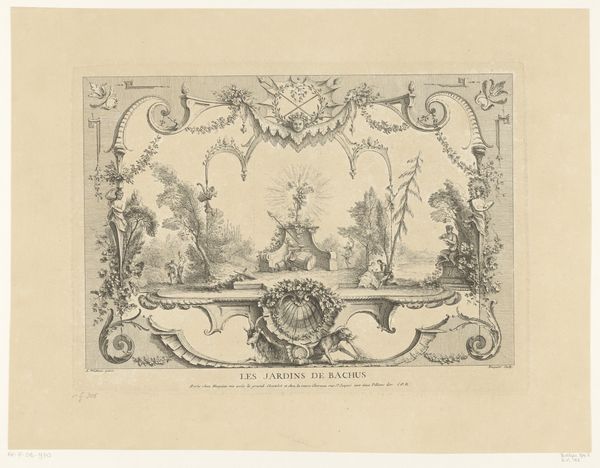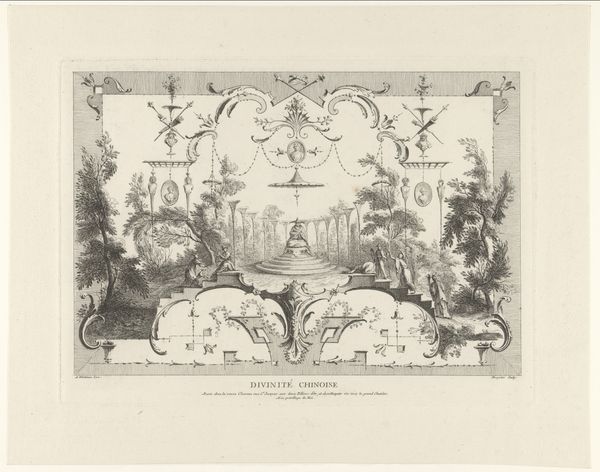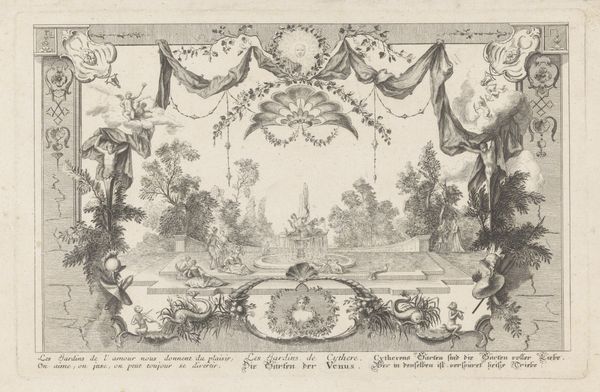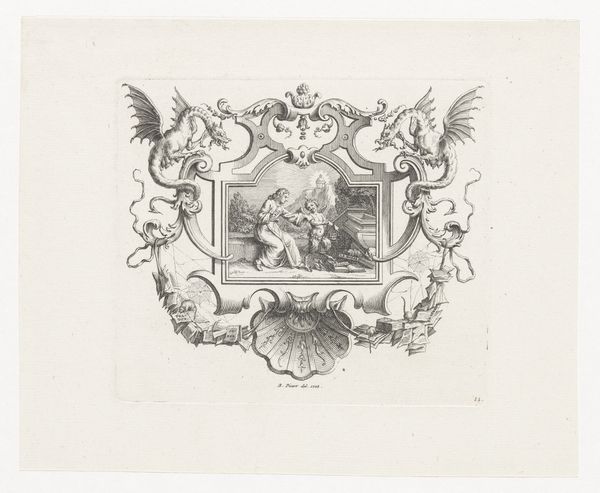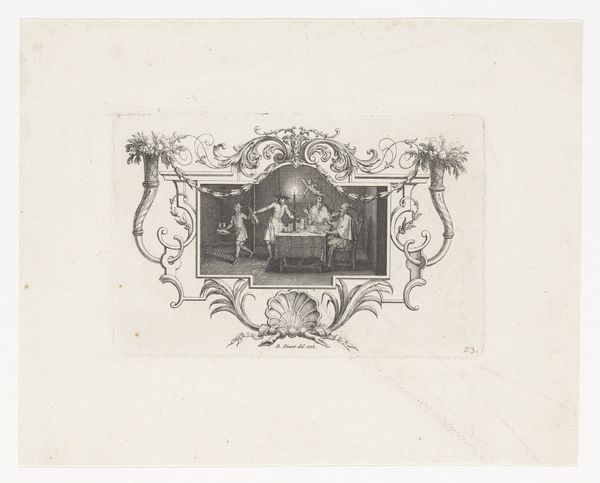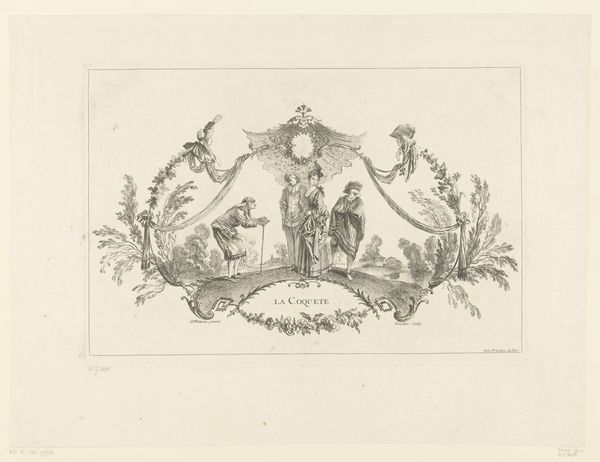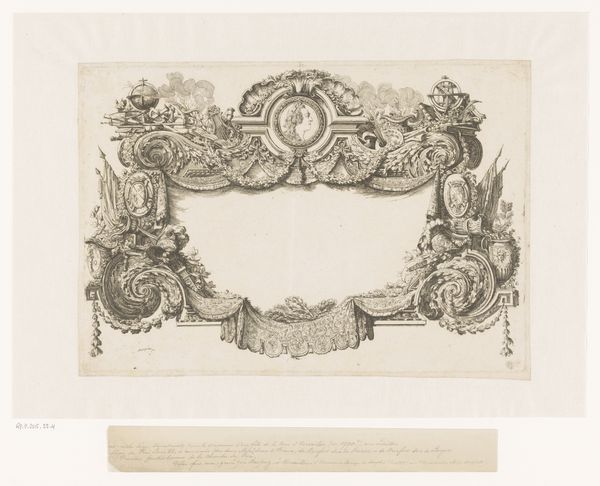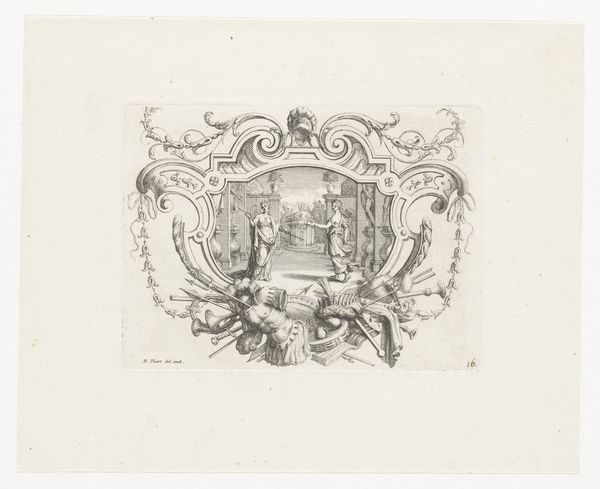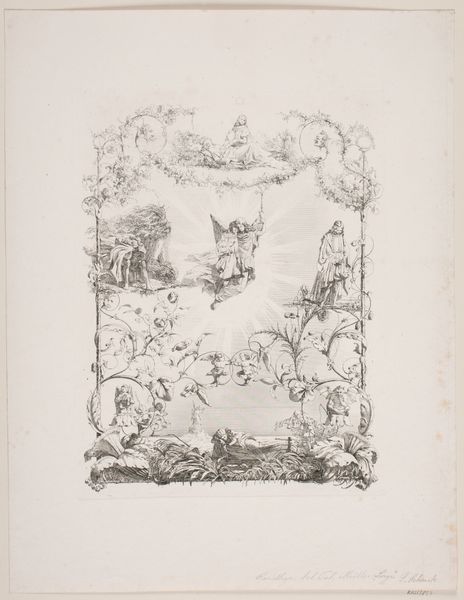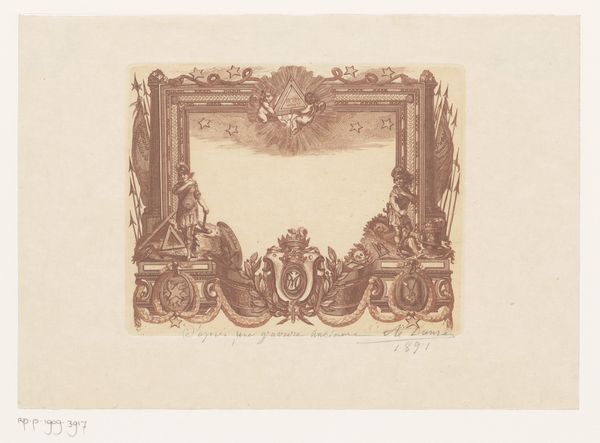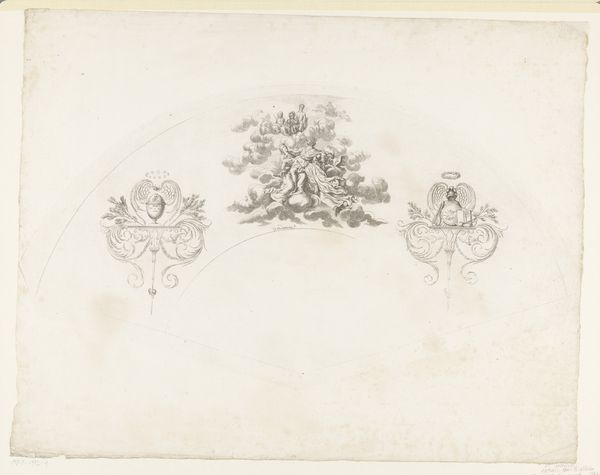
drawing, print, ink, engraving
#
drawing
# print
#
pen sketch
#
landscape
#
ink
#
engraving
#
rococo
Dimensions: height 289 mm, width 397 mm
Copyright: Rijks Museum: Open Domain
Curator: Welcome. We're looking at "Tuinen van Venus," or "Gardens of Venus," a print made with ink, pen, and engraving methods. The artwork was produced between 1729 and 1737. Editor: It immediately evokes a sense of opulent leisure—almost decadence—doesn’t it? There’s a controlled exuberance in the arrangement, balanced by precise execution. Curator: Certainly, we see the hallmark qualities of Rococo landscape design exemplified here. Looking at the materials, the print medium itself is key. Engraving allowed for a democratization of imagery, bringing these aristocratic fantasies to a broader audience beyond the direct patrons of landscape architecture. Editor: It makes me wonder about the labor involved in both creating and consuming this image. Who were the artisans reproducing these designs, and what role did women play, not just as subjects, but as creators and consumers of these images of pleasure? Were they actually included in this pleasure? Curator: Excellent questions. The making of prints often involved workshops with skilled laborers, yes. Understanding those unseen hands illuminates how social hierarchies were both reinforced and sometimes, perhaps subtly, challenged within the production process. What about the broader socio-political conditions under which landscapes like this flourish? I wonder how they related to contemporary colonialism... Editor: Precisely. And it brings forth a contrast: While these scenes promise harmony and delight, their creation might well have involved materials and labor extracted from colonized lands, embodying exploitative structures. The supposed innocence and sensuality depicted would have been dependent upon exploitation, as we may recognize also in its consumption today... Curator: Absolutely. Thinking of the paper it is printed on, even that speaks to global trade routes and manufacturing practices of the time. We often romanticize periods like the Rococo, but grounding ourselves in material realities reveals the complexities and contradictions embedded within these idealized depictions. Editor: It shows the constant need to interrogate representations of beauty and leisure, to unpack the often-hidden systems of power and oppression they conceal. And to remember that consumption of this visual good implies complicity and therefore responsibility to actively engage. Curator: Indeed. Considering the artistic choices and material construction of an artwork provides essential insights into its cultural function and the world it reflects. Editor: A critical lens provides opportunities for understanding and engagement, to acknowledge its lasting echoes of oppression that continue to define present material and economic structures.
Comments
No comments
Be the first to comment and join the conversation on the ultimate creative platform.
